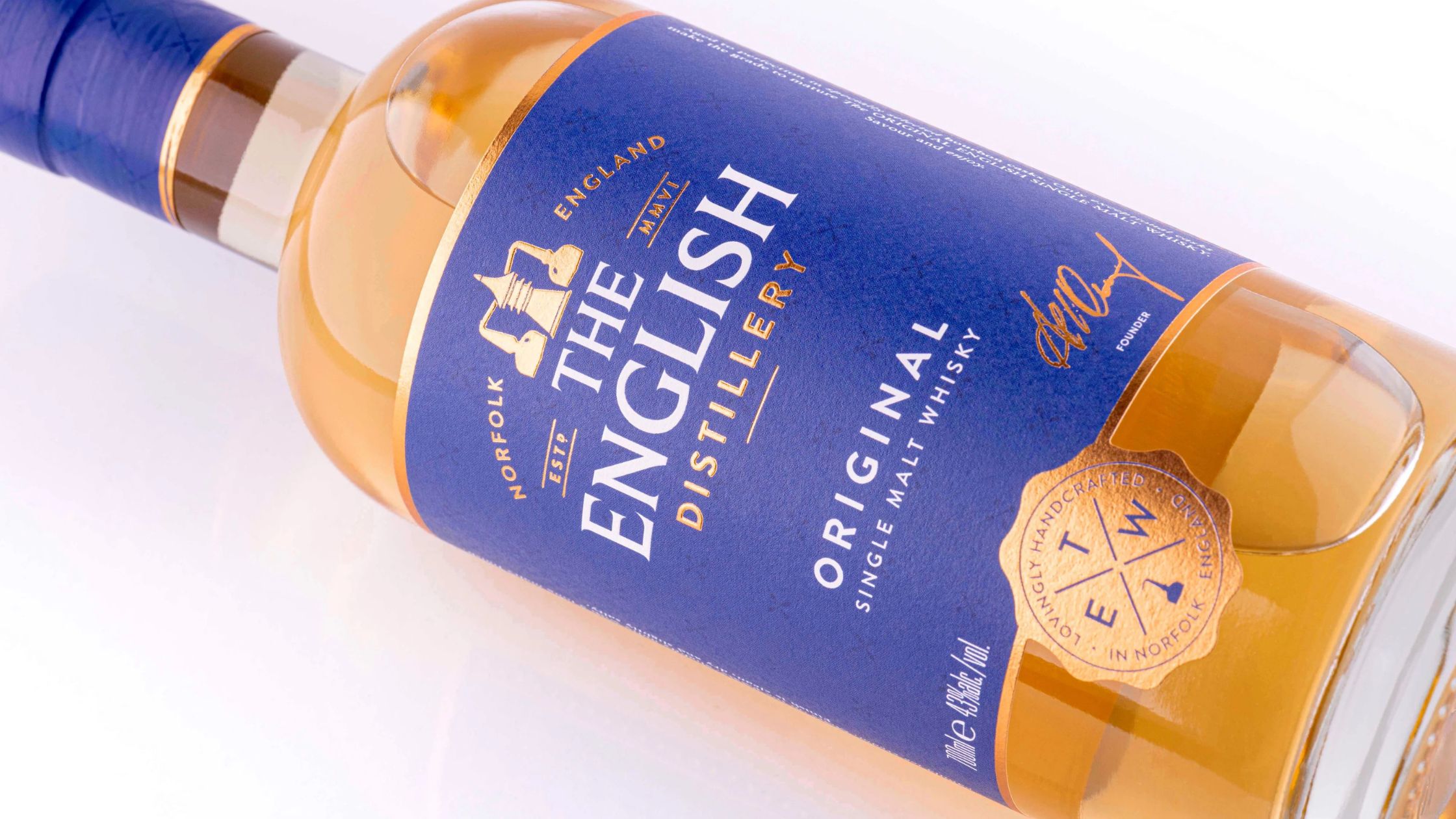Best Liquor Under ₹10,000 for a Perfect New Year 2026 Party
2025-12-05


In 2006, England wasn’t on anyone’s whisky map. Scotland was still king, Ireland was rising, and Japan had entered global consciousness. But England? Silent since 1901.
That changed in a small Norfolk village called Roudham, when James Nelstrop and his son Andrew fired up the stills at what would become The English Distillery. It was the first registered whisky distillery in England in over a century, and few could have guessed it would lead to a national revival.
Today, with over 60 English whisky distilleries in operation, The English Distillery is rightly seen as the birthplace of the modern English whisky movement - not by shouting about it, but by doing things properly.
James Nelstrop wasn’t a marketer. He was a lifelong farmer with a vision: to turn East Anglian barley, some of the best in the world, into a spirit England could be proud of.
That dream was sparked by a casual comment from James’s own father:
“It’s a shame all this barley has to go to Scotland to be turned into whisky.”
It stuck. Years later, after decades of experience in farming and grain, James returned to Norfolk and built a distillery from scratch using local barley, a chalk aquifer underfoot, and copper stills built by Forsyths of Rothes.
The English Whisky Co., as it was once called, was more than a project. It was a family commitment. James passed away in 2011, but the spirit of the distillery quite literally continues under Andrew’s leadership.
Some whisky lovers still remember the name St. George’s Distillery. It wasn’t a brand strategy, just the name of the address. But confusion (and legal pressure from a certain California-based producer) meant it had to change.
Four letters from US lawyers later, the distillery officially became The English Distillery, a name that now reflects its pioneering role more accurately than ever.
Ironically, when Andrew first stepped into the business, he didn’t even like whisky. It took a bartender and a gently watered-down sample from a wine cask to open his mind. He never looked back.

The English Distillery isn't built for speed or scale. It’s built for quality using local ingredients, traditional methods, and an approach rooted in agriculture, not trends.
| Step | Detail |
| Barley | Local Laureate (some peated to 65ppm) |
| Yeast | Fermentis M-1 |
| Fermentation Time | 96–104 hours |
| Water Source | Breckland Aquifer |
| Still Shape | Dumpy with descending lyne arms |
| New Make ABV | ~72% |
At any time, around 6,000 casks are ageing on-site. But here’s what makes it different: they’re not just filled and forgotten. Each one is chosen for full-term ageing, not gimmicky finishes.
Andrew doesn’t believe in “splash-in-and-dump” finishing. If they reuse a cask, it’s for serious secondary maturation. The goal is always balance, not novelty.
| Cask Type | Sourced From | Usage Style |
| Bourbon Barrels | Jim Beam (USA) | Full-term maturation |
| Sherry Casks | Miguel Martin (Spain) | Full-term or blending |
| Rum Casks | In-house seasoned | 10+ years seasoning |
| Wine Casks | Local & European | Selective maturation |
This distillery doesn’t just work hard - the land does too. Environmental care isn’t a marketing point here, it’s baked into the way they’ve always operated.
The warehouses are evolving too, shifting from traditional upright storage to horizontal barrel racks for better airflow, access, and ageing consistency.
| Nose | Palate | Finish |
| Pear drops, custard, bonfire smoke, dates | Fruitcake, marzipan, tropical fruits | Creamy, oaky, faint spice |
| Nose | Palate | Finish |
| Guava, banana, caramel, cake batter | Rum & raisin, custard, nutmeg | Coconut, banana, clove, soft spice |
Tasting Notes
| Nose | Palate | Finish |
| Brandy snaps, rose, toffee, chocolate | Mocha, ginger, cherries, cake | Bonfire smoke, sticky toffee, oak char |
In a world of fast launches, collectible drops, and Instagram hype, The English Distillery stands apart.
Andrew Nelstrop is clear:
“We’re here to build a legacy - not an exit strategy.”
They even talk people out of buying private casks if they’re only in it to flip bottles for profit. That’s rare. But it shows you what this place stands for.
Key Takeaways
What started with one family’s dream and a single still in Norfolk has grown into something much bigger - not just a distillery, but a turning point in English whisky history. The English Distillery didn’t chase headlines or trends. They focused on the liquid, the land, and the legacy.
And because of that, they didn’t just bring English whisky back.
They gave it a future.
Whether you're a long-time fan or new to the category, visiting this distillery or tasting their whisky is more than just a trip or a dram — it's a reminder that doing things properly still matters.
If England’s whisky story is still being written, this is where the first chapter lives
Read also: Cocktail History Around the World: Stories, Styles and Signature Drinks